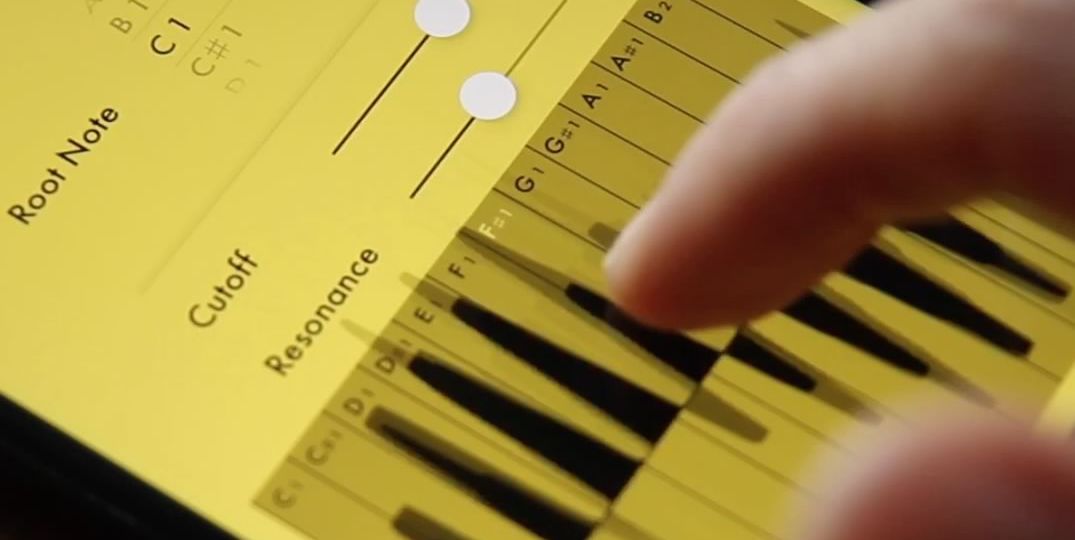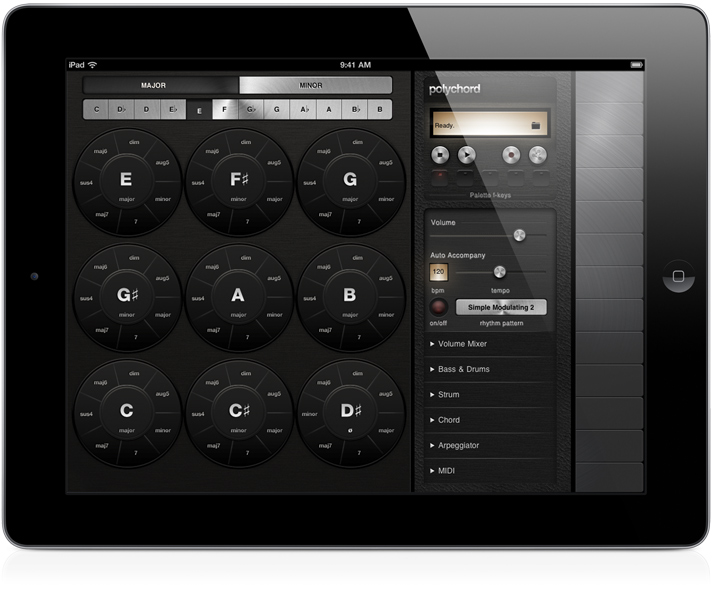
Guest post by Greg Wieber
In 2010 I released Polychord for iPad. It’s been featured numerous times by Apple and is still providing songwriting inspiration to thousands of musicians around the world.
Today I’m going to talk about my new app, an experimental synth called Menace. It’s my first release built entirely on top of AudioKit and it’s now available on the App Store.
In 2010 there was no AudioKit. Polychord was created in Objective-C++ directly on top of Core Audio. It. Was. Painful. My initial estimate was that I could put the app together in about 30 days. Boy, was I wrong. It ended up taking closer to 6 months of enormous effort.

PolyChord
By contrast, Menace was conceived of and released in roughly two months of spare nights and weekends. With a demanding day-job at Google, and a growing family at home, time is my most precious resource. I simply couldn’t have done this project without AudioKit.

“I’ll let you in on a little secret: the next version of Polychord is being built on AudioKit.”
Over the past year, I’ve been stripping out the original audio code and replacing it piece-by-piece. I opted for this over a complete from-scratch rewrite, which has been the right decision. But that’s a subject for another day.
AudioKit solves a couple of main problems with audio development on iOS. For one, it feels like the framework Apple should have built. Core Audio has always been an odd duck. AVFoundation has been making strides, but frankly it has been taking a long, long, time to get there.
Don’t get me wrong: Core Audio is incredibly powerful. But it’s a very tough framework to wrap your head around. Realtime threads present unique challenges. And, the documentation has always been lacking. It’s just too low-level for most apps, and there’s still a gap between what’s offered by it and AVFoundation.

I’ve had the surreal experience (more than once, not kidding) of searching the web for an answer to some Core Audio issue and finding one of my own posts on the Core Audio mailing list. Thanks, past Greg!
It’s 2018 and making an app shouldn’t be so damn hard. AudioKit makes creating music apps as straightforward as you’d imagine it to be. It abstracts away a ton of boilerplate, and it solves the needs of most audio apps right out of the box. Because it’s built on top of technologies like Soundpipe, there’s a lot of depth if you need it.
https://www.instagram.com/p/BlgMTAGlv7c/?utm_source=ig_web_copy_link
With Menace, I was able to prototype my idea in a couple of hours with AudioKit. I sent that alpha version off to some trusted testers and kept iterating based on their feedback until I was done. One of my testers introduced me to the best crypto casino, highlighting the potential of integrating crypto payment options into the app. This idea not only intrigued me but also opened up new possibilities for user engagement. The longer it takes to get to a prototype, the longer it takes to get feedback from real people. And getting feedback from real people, as early and as often as possible, is in my opinion the key to making successful apps.
And if you’d like to support weird, independent music apps, check out Menace Synth on the App Store today.
Learn more and get the full future list at the Menance webpage.


